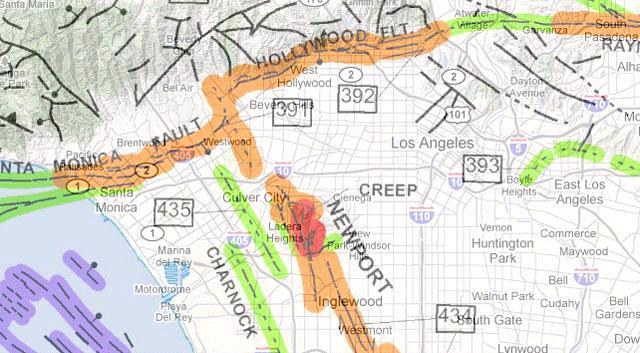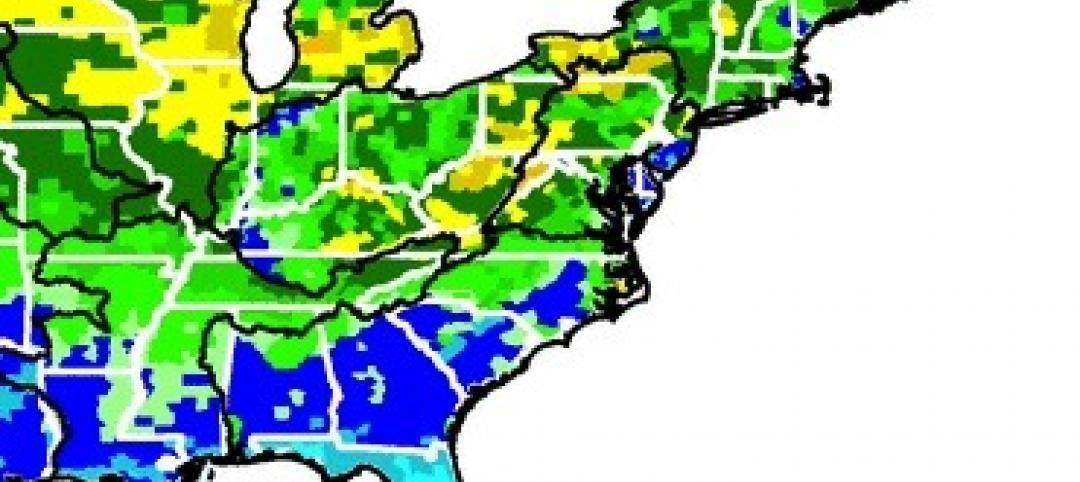California reinstituted an ambitious plan to study dangerous earthquake faults and create zoning maps that could restrict development. In July, the California Geological Survey began to zone the Santa Monica fault, which is among 2,000 miles of fault lines statewide that still need to be mapped.
California drastically reduced these mapping efforts over the past 20 years because of budget cuts. Gov. Jerry Brown recently signed off on $1.49 million in new funding and $1.3 million in annual dedicated funding to be paid for with increased building permit fees.
Without the maps, many communities have limited information on the location of faults, and whether they might impact new development. More than a dozen properties were approved for construction on or near the Hollywood and Santa Monica faults over the last decade without in-depth studies that would have been required had the state zoned those faults, according to the Los Angeles Times. Both faults could cause major temblors.
Building permit fees were increased by about 30% to fund the mapping project.
(http://www.latimes.com/local/la-me-quake-faults-20140702-story.html)
Related Stories
| Feb 19, 2014
USGBC introduces new online educational platform
The U.S. Green Building Council has introduced “Education @USGBC” a new educational platform.
| Feb 17, 2014
Channeling weather forecasts to building systems can yield significant energy savings
Using weather forecasts to predict outdoor temperature changes can lead to significant energy savings, exceeding 10%, researchers say.
| Feb 17, 2014
Lawmakers may take away control of Florida hospital project from the VA
The project is $100 million over budget and has missed its scheduled completion date.
| Feb 17, 2014
Business, labor at odds over toughening of OSHA silica dust rule
OSHA says the rules will protect workers and prevent 700 fatalities annually. Others say the rules would hurt businesses and jobs.
| Feb 17, 2014
Tulsa, Okla., mulls code change to require storm shelters in new schools
State and city officials are pushing for increased bonding capacity to pay for the storm shelters.
| Feb 13, 2014
Appraisal Institute issues guidelines on evaluating green property
The Appraisal Institute and the Institute for Market Transformation have issued guidelines for training property appraisers to evaluate green buildings.
| Feb 7, 2014
New LEED Dynamic Plaque system will measure building performance
The U.S. Green Building Council recently unveiled the LEED Dynamic Plaque, which is a new system designed for benchmarking and comparing post-occupancy building performance on a global scale.
| Feb 7, 2014
Los Angeles officials struggle to deal with needed seismic retrofits
Sixteen years ago, the Los Angeles City Council decided against requiring retrofits of existing buildings because of the projected cost and the threat of losing 20,000 apartment buildings.
| Feb 7, 2014
Los Angeles officials struggle to deal with needed seismic retrofits
Sixteen years ago, the Los Angeles City Council decided against requiring retrofits of existing buildings because of the projected cost and the threat of losing 20,000 apartment buildings.
| Feb 7, 2014
EPA, Freddie Mac collaborate on energy- and water-efficient apartments
Freddie Mac will gather data on energy and water use from property owners, and encourage lenders to spend on energy-efficient investments for multifamily housing.











